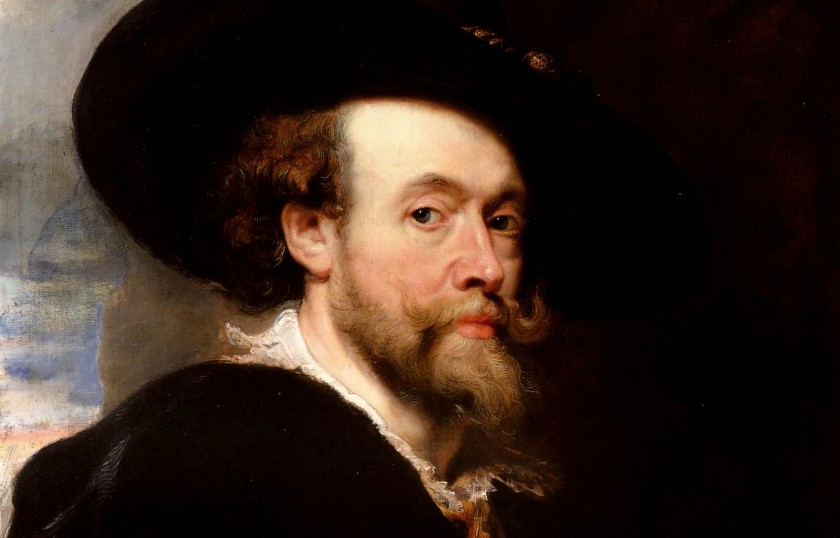Peter Paul Rubens (1577-1640)
Peter Paul Rubens was a renowned Flemish artist who is considered one of the most influential painters of the Baroque period. Born on June 28, 1577, in Siegen, Germany, Rubens later moved to Antwerp, Belgium, where he spent most of his life and created his exceptional body of work. Rubens was not only a painter but also a diplomat, art collector, and a prolific artist who produced an extensive range of artworks, including portraits, landscapes, historical, and religious paintings. His artistic style and techniques have left an indelible mark on the art world, and his contributions to the Baroque movement are highly regarded.
Early Life and Education
Rubens’ early life was marked by travels and exposure to different cultures. His father, Jan Rubens, was a lawyer and an alderman, and his mother, Maria Pypelincks, was a merchant’s daughter. After his father’s death, his mother married again, and the family moved to Antwerp.
At a young age, Rubens displayed a keen interest in art and received his initial training from various local artists. He then traveled to Italy, where he immersed himself in the works of renowned Italian masters such as Titian, Michelangelo, and Caravaggio. This exposure to the Italian Renaissance greatly influenced Rubens’ artistic style and techniques.
Artistic Career
Upon returning to Antwerp, Rubens quickly established himself as a prominent artist. He became a member of the Guild of Saint Luke, a prestigious association of artists and craftsmen. Rubens’ artistic talent, combined with his intellect and charm, led to numerous commissions from wealthy patrons, including nobility and royalty.
Rubens’ works often depicted religious, mythological, and historical subjects. His paintings were characterized by their dynamic compositions, vibrant colors, and skillful handling of light and shadow. Rubens had a unique ability to capture the human form and emotions, which added a sense of realism and drama to his paintings.
Influence and Legacy
Rubens’ impact on the art world cannot be overstated. His innovative techniques and mastery of composition influenced generations of artists. His works continue to be celebrated and admired for their beauty, emotion, and technical excellence.
As a diplomat, Rubens traveled extensively throughout Europe, representing the Spanish Netherlands. His diplomatic skills and artistic reputation opened doors for him, allowing him to meet and interact with influential figures of his time. Rubens’ connections and friendships with prominent individuals, such as kings, queens, and aristocrats, further solidified his status as a respected and sought-after artist.
FAQs about Peter Paul Rubens
1. What are some famous paintings by Peter Paul Rubens?
Some of Rubens’ most famous paintings include “The Descent from the Cross,” “The Judgment of Paris,” “The Garden of Love,” and “The Massacre of the Innocents.”
2. Did Rubens have any apprentices or followers?
Yes, Rubens had numerous apprentices and followers, including Anthony van Dyck, Jacob Jordaens, and Jan Brueghel the Elder.
3. How did Rubens’ artistic style differ from other painters of his time?
Rubens’ style was characterized by its dynamism, vivid colors, and emotional intensity. He had a unique ability to bring life and movement to his subjects, setting him apart from his contemporaries.
4. Where can I see Rubens’ paintings today?
Rubens’ works can be found in museums and art galleries around the world. Some notable collections include the Rubenshuis in Antwerp, the Louvre in Paris, and the National Gallery in London.
5. What is the significance of Rubens’ contribution to the Baroque movement?
Rubens’ art played a crucial role in defining the Baroque style. His use of dramatic lighting, emotional expression, and grand compositions set the stage for the Baroque period’s characteristic features.
In conclusion, Peter Paul Rubens was a highly influential artist whose contributions to the art world continue to be celebrated today. His mastery of composition, use of vibrant colors, and ability to capture the human form set him apart as one of the greatest painters of the Baroque period. Rubens’ legacy lives on through his extensive body of work and his lasting impact on the art world.
